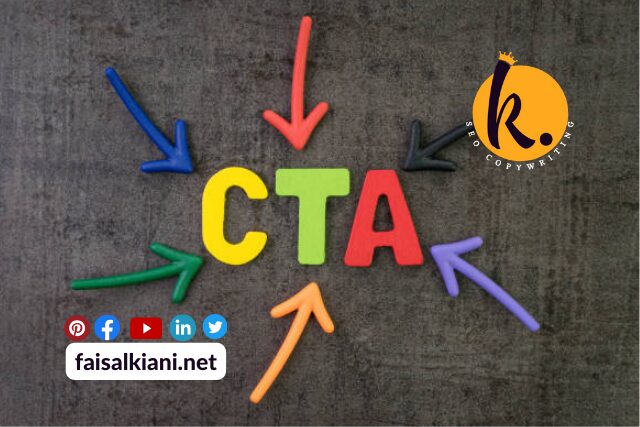Ever caught yourself clicking “Buy Now” without even realizing it? Or maybe you signed up for that newsletter you swore you didn’t need? Yeah, me too. That’s the power of direct response copywriting. It’s like the Jedi mind trick, but for your shopping cart.
I’m Faisal, and at Kaydot, we’re not just SEO whizzes; we’re word wizards. We craft stories that make people stop, stare, and click. We’ve helped tons of businesses turn words into customers, and now, I’m spilling the secrets.
So, grab a coffee (or tea, if that’s your thing), and let’s dive into the world of persuasive words that sell.
What is Direct Response Copywriting | The Inside Story

Direct response copywriting is a type of writing used in ads and marketing to get people to do something right away, like buy something or sign up for something.
Here are some important things about it:
- Tell People What to Do: It always tells you clearly what to do next, like “Click here to buy now!” or “Call this number to get started!”
- Use Feelings: It tries to make you feel something so you want to do what it says. It might talk about how happy you’ll be if you buy the product or how worried you’ll be if you don’t.
- Talk About Benefits: It talks about how good the product is for you, not just what it can do. Like, “This toothpaste makes your teeth super shiny and clean!”
- Easy to Measure: The people who write these ads can see how many people do what the ad says, so they know if it’s working well.
- Keep You Interested: It tries to keep you reading by telling stories, making jokes, or making you curious.
- Talk to You Personally: It feels like it’s talking just to you, about things you care about.
So, direct response copywriting is all about getting you to do something right away by making you feel good about it and telling you exactly what to do.
Direct response copywriting is called “direct response” because it wants you to do something right away when you see it. The word “direct” means it tells you exactly what to do, like “Call now!” or “Click here!” And “response” means the action they want you to take, like buying something or signing up for something.
So, it’s called “direct response” because it’s clear and it wants you to act quickly.
How Direct Response Copywriting Works | Serect Behind Quick Actions

Direct response copywriting is like a super cool spell but with words! It’s all about getting people to do something right away. Here’s how it works:
- Get Noticed: First, it grabs your attention with catchy headlines or interesting stories.
- Show the Good Stuff: Instead of just talking about the product, it tells you how it can make your life better. It focuses on the good things you’ll get, not just what it does.
- Touch Your Heart: It might make you feel happy, excited, or even a little worried if you don’t act.
- Tell You What to Do: It’s not shy about telling you what to do next. Whether it’s “Buy Now” or “Sign Up Today,” it’s clear and loud.
- Make You Move: Sometimes, it makes you feel like you need to act fast. This could be because of a limited-time offer or the fear of missing out.
By putting all these things together, direct response copywriting makes a message that makes you want to do something. It’s like a friendly push using words to turn website visitors into happy customers or fans.
Understanding Direct Response Copywriting Examples

Here are some examples of direct response copywriting:
- Advertisement for a New Video Game: “Get ready for the ultimate adventure! Join the quest to save the kingdom from darkness. Are you brave enough to wield the sword and defeat the dragon? Click here to embark on your journey now!”
- Email Subscription Prompt: “Don’t miss out on exclusive tips and tricks delivered straight to your inbox! Sign up for our newsletter today and become a cooking pro in no time. Enter your email below to get started!”
- Call-to-Action Button on a Fitness Website: “Transform your body and boost your confidence! Start your fitness journey today with a free trial. Click here to claim your spot and unleash your full potential!”
- Social Media Ad for a Skin Care Product: “Say goodbye to dull skin and hello to radiant beauty! Our new skincare line is packed with natural ingredients for a healthy glow. Swipe up to shop now and discover your best skin ever!”
- Flyer for a Local Pizza Delivery Service: “Craving a delicious slice of pizza? We’ve got you covered! Order now and enjoy piping hot pies delivered straight to your door. Call [phone number] to satisfy your hunger!”
These examples all include a clear call to action, highlight the benefits of the product or service, and aim to engage the reader to take immediate action.
Types of Direct Response Copywriting | The Premium Niche

Here are some Direct Response Copywriting types:
- Sales Letters: Letters written to persuade the reader to make a purchase or take a specific action.
- Email Marketing: Messages sent via email with the goal of driving immediate action, such as making a purchase or visiting a website.
- Landing Pages: Web pages designed to capture visitor information or encourage a specific action, often with a form or call to action.
- Advertisement Copy: Copy used in advertisements, whether online or in print, to prompt immediate response, such as clicking a link or making a purchase.
- Social Media Posts: Copy written for social media platforms with the aim of generating engagement, clicks, or conversions.
- Direct Mail: Physical mail pieces designed to elicit a response, such as requesting more information or making a purchase.
- Infomercial Scripts: Scripts used in television or online infomercials to persuade viewers to make a purchase or call a toll-free number.
- Catalog Copy: Descriptive copy in catalogs that encourages readers to make purchases by highlighting product benefits and features.
- Brochure Copy: Text written for brochures, often used to inform and persuade potential customers about products or services.
- Webinar Scripts: Scripts prepared for online webinars, aiming to educate and persuade participants to take action, such as signing up for a course or purchasing a product.
- Radio Commercial Scripts: Scripts written for radio advertisements to capture listeners’ attention and prompt them to respond, often by visiting a website or calling a toll-free number.
- Video Sales Letters (VSLs): Video scripts designed to persuade viewers to take immediate action, typically by making a purchase or signing up for a service, presented in a video format.
These are just a few examples of the various types of direct response copywriting used to engage audiences and drive immediate action.
Understand Types of Direct Response Copywriting

Here is how some different types of direct-response copywriting work around you:
Some Valuable Direct Response Copywriting Books

In the world of writing to get a response, knowledge is super important! Here are some great books to help you become really good at convincing writing that gets results:
Old But Gold:
- Breakthrough Advertising by Eugene Schwartz: This book is like a treasure trove of secrets. It talks about why people do what they do and how to write stuff that makes them want to buy things. It’s like having a magic guidebook for writing ads that work!
- The Boron Letters by Gary Halbert: These letters are famous because they tell cool stories that show how emotions can make people want to buy stuff. It’s like listening to a wise friend who gives awesome advice on writing ads that people love.
New and Awesome:
- Magnetic Marketing by Dan Kennedy: This book is full of really useful tips to help you write ads that people can’t resist. It teaches you how to understand what people want, write catchy headlines, and make arguments that make people want to buy.
- The Copywriter’s Handbook by Robert W. Bly: This book covers everything you need to know about writing ads, from the basics to the advanced stuff. It’s like having a really smart teacher who explains things in an easy way, with lots of examples to help you learn.
- Influence: The Psychology of Persuasion by Robert Cialdini: This book isn’t just about writing ads, but it’s really helpful for understanding why people buy things. It talks about how our brains work and how to use that to write ads that make people want to buy stuff.
Each of these books has cool tips and tricks to help you become a pro at writing ads that people love. Happy reading and happy writing!
How to Become a Direct Response Copywriter | Complete Guide

Do you love words and want to use them to make a real difference in business? If you’re interested in becoming a direct response copywriter, this guide will help you get started.
Understanding the Job:
Direct response copywriting is all about getting people to take action. Unlike regular writing, it’s focused on persuading readers to do something, like buying a product or signing up for a service.
The Power of Persuasion:
To be a great copywriter, you need to understand what makes people tick. You’ll learn how to use words to convince them that they need what you’re offering.
Crafting Compelling Calls to Action:
Calls to action (CTAs) are super important in copywriting. They tell people what to do next, like “Buy Now” or “Sign Up Here.”
Building Your Skills:
Start with the Basics:
Read books like “Breakthrough Advertising” and “Magnetic Marketing” to learn the ropes.
Study Successful Copy:
Look at ads and emails that get results. Figure out what makes them work so well.
Take Courses:
Consider taking classes to learn more and practice your skills.
Creating Your Portfolio:
Show What You Can Do:
Even if you haven’t had any paid jobs yet, you can still show off your skills. Write samples for companies you like or create your own projects.
Start Small:
Offer to help out non-profits or startups for free to get experience and build your portfolio.
Launching Your Career:
Find Freelance Gigs:
Websites like Upwork and Fiverr are good places to start looking for jobs.
Look for Agencies:
Some companies specialize in copywriting. See if any are hiring.
Keep Learning and Growing:
Stay Informed:
The copywriting world is always changing. Stay up to date with workshops, conferences, and networking.
Analyze Your Work:
Pay attention to how your writing performs. See what works and what doesn’t so you can improve.
Build Connections:
Networking with other writers and business people can open up new opportunities.
The Perks of Copywriting:
A direct response copywriting career can be really rewarding. You’ll see your work make a real impact, have room to be creative, and potentially earn a good income.
Remember, it takes time and practice to become a great copywriter. Keep learning, keep writing, and you’ll get there!
How to Build a Direct Response Copywriting Portfolio

Attract Clients with Compelling Samples
To show off your awesome writing skills and attract dream clients, you need a killer portfolio. Here’s how to make one that stands out:
Starting Strong:
Pick Your Specialty: Decide what you’re best at, like writing sales letters or emails. This helps you target the right clients and show off samples that match what they need.
Quality Over Quantity: It’s better to have a few really good samples than a bunch of okay ones. Focus on making each piece top-notch.
Collecting Your Best Work:
Make Samples for Big Brands: Don’t wait for clients. Write samples for famous brands or products you love. This shows you can write for different industries and audiences.
Do Your Own Projects: Come up with ideas for websites or write emails to show what you can do. Make them shine!
Help Out for Free: Work with charities or startups to get experience and build your portfolio. It’s a win-win!
Showing Off Like a Pro:
Use a Fancy Portfolio Website: Put your samples on a cool platform like Behance or Squarespace. Make it easy for clients to see your work and understand what you can do.
Share Success Stories (if you have them): If you’ve worked with clients before, tell the story of what you did and how it helped them. People love to see results!
Making an Impact:
Customize Your Portfolio: Make sure your samples match the kind of work you want to do. If you want to write for online shops, show off samples for websites.
Talk About Benefits: Show how your writing can help clients make more sales or get more leads. It’s not just about what you write; it’s about what it can do.
Tell People What to Do: Even in your portfolio, use clear calls to action. Tell visitors to get in touch with you for a chat. Make it easy for them to reach out.
Extra Tip: Connect with other writers and marketers. Show them your portfolio and ask for feedback. Networking can lead to cool opportunities!
Follow these steps to make a portfolio that wows clients and gets you hired. Keep updating it with new projects, and watch your career take off!
What is SEO Copywriting | Is it a Direct Response Copywriting?

SEO copywriting and direct response copywriting are two important tools in the digital marketing toolbox, but they serve different purposes.
Here’s a breakdown to clarify their roles:
SEO Copywriting:
- Goal: Improve website search engine ranking (SERP) for relevant keywords.
- Focus: Informs search engines and users about the content and value a webpage offers.
- Keywords: Plays a strategic role. SEO copywriting incorporates relevant keywords throughout the content to improve search engine discoverability.
- Conversion: While SEO copywriting can indirectly influence conversions by driving organic traffic, the primary goal isn’t to get an immediate response.
- Example: Imagine an informative blog post titled “Top 10 Hiking Trails for Beginners in California.” This SEO-optimized content aims to rank high in search results for searches related to “beginner hiking trails California.”
Direct Response Copywriting:
- Goal: Elicit a specific and immediate response from the reader, often within a short timeframe.
- Focus: Persuades the reader to take action, such as making a purchase, signing up for a newsletter, or downloading a free guide.
- Benefits: Emphasizes the benefits of a product or service, highlighting how it solves the reader’s problems and improves their lives.
- CTAs (Calls to Action): A cornerstone of direct response copywriting. It uses clear and concise CTAs like “Buy Now” or “Download Your Free Guide” to tell readers exactly what you want them to do next.
- Example: A compelling sales page for a new pair of hiking boots might use direct response copywriting to highlight features like comfort, durability, and waterproof technology. It would then include a strong CTA to “Buy Now and Get Free Shipping!”
Key Differences:
Here’s a table summarizing the key differences between SEO copywriting and direct response copywriting:
| Feature | SEO Copywriting | Direct Response Copywriting |
|---|---|---|
| Goal | Improve search engine ranking | Elicit a specific response |
| Focus | Informs search engines and users | Persuades users to take action |
| Keywords | Strategically used for discoverability | Not the sole focus, but can be used |
| Conversion | Indirectly influences conversions | Direct focus on immediate conversions |
| Call to Action (CTA) | Not always present, may be subtle | Strong and clear CTAs are essential |
| Examples | Blog posts, website content | Sales pages, landing pages, email sequences |
Can They Work Together?
Absolutely! While SEO copywriting and direct response copywriting have distinct goals, they can be powerful allies in your digital marketing strategy.
For example, an SEO-optimized blog post on hiking trails might subtly convert readers into paying customers by mentioning a high-quality hiking boot brand throughout the content.
By understanding the strengths of each type of copywriting, you can create a cohesive digital presence that attracts visitors through search engines and then persuades them to take the desired action.
How to Find Direct Response Copywriting Jobs?

The world of direct response copywriting beckons with exciting opportunities to craft words that drive results. But where do you begin your job search? Here’s a roadmap to guide you towards landing your dream direct response copywriting position:
Exploring Online Opportunities:
Freelance Websites: Look at places like Upwork, Fiverr, and Freelancer. Make a profile that shows off your writing skills, and apply for jobs that need copywriters.
Copywriting Companies: Check out companies that write persuasive ads. Make your resume and portfolio fit what they’re looking for, and apply on their websites.
Job Boards: Keep an eye on sites like Indeed or LinkedIn. Search for jobs like “copywriter” or “marketing writer” and apply for ones that match what you can do.
Being Proactive:
Meet New People: Talk to other writers and marketers. You can meet them at events or online. Making connections can help you find job opportunities.
Send Cold Emails: Write emails to companies you like. Tell them why you’d be a great copywriter for them. It shows you’re interested in their company.
Making Your Applications Shine:
Fix Up Your Resume: Make sure your resume shows off your writing skills. Tell them about any cool things you’ve done, like making ads that got a lot of clicks.
Show Off Your Work: Put your best writing samples in a portfolio. Include different kinds of writing you’ve done, like ads or emails. It helps companies see what you can do.
Keep Trying: Finding a job can take time. Keep looking, keep learning, and keep improving your writing. With practice, you’ll find the perfect job in copywriting.
Pro Tips
Think about what kind of writing you like best. You could focus on writing for specific industries, like sports or fashion. It can help you stand out to employers looking for someone with special knowledge.
Direct Response Copywriting Course | Where to Take Start

Do you like to play with words and convince people of things? Then direct response copywriting might be your perfect job! It’s all about writing special messages that get people to do something right away, like buying something or signing up for a website.
Here’s how to become a superstar direct response copywriter:
Learn the tricks of the trade:
- Books are your best friends: Read books by famous copywriters like Eugene Schwartz or Dan Kennedy. They’ll teach you how to write in a way that makes people want to listen.
- Websites are cool too!: Check out websites like Copyblogger or The Copywriter Collective. They have articles and tips to help you improve your writing.
- Copywriting courses: If you learn best in a classroom, you can take a copywriting course online or in person.
Show off your skills:
- Write for free!: Even if you don’t have a job yet, you can practice by writing cool messages for your favorite stores or websites.
- Do your own thing: Make up your own fake website and write messages to get people to visit it.
- Help others: Offer to write messages for free for non-profit groups or small businesses.
Finding a copywriting job:
- Websites that help you find work: Look for job openings on websites like Upwork or Fiverr.
- Copywriting agencies: Big companies sometimes hire special agencies to write their messages. See if you can find a job at one of those places.
- Job boards: Websites like Indeed or LinkedIn sometimes have job listings for copywriters.
Remember: The more you practice and learn, the better you’ll become! Keep at it and you’ll be a direct response copywriting pro in no time!
Direct Response Copywriting Salary | All Levels

Ever wondered how much someone who writes cool messages for websites and stores gets paid? That’s a Direct Response Copywriter! They use words like magic spells to get people to buy stuff or sign up for things.
Here’s the thing: how much they make depends on a few things:
- Experience Level: Like video games, the more levels you beat (experience you have), the more money you earn! Beginners make less than super-experienced writers.
- Where You Live: Big cities like New York cost more to live in, so copywriters there might make more than those in smaller towns.
- What Kind of Company: Working for a giant tech company might pay more than helping a local animal shelter (but both are important!).
- Big Company vs. Small Company: Big companies with lots of money can sometimes pay more than smaller ones.
- Working for Yourself vs. Getting a Job: If you work for yourself (freelance), you set your own prices. But with a regular job, you get a steady paycheck and maybe even cool benefits.
So, how much money are we talking about? (In the United States, as of April 2024)
- Just Starting Out (0-2 years experience): $45,000 – $60,000 per year (enough for lots of video games and pizza!)
- Getting the Hang of It (3-5 years experience): $60,000 – $75,000 per year (enough for a sweet bike or maybe even a trip to Disney World!)
- Superstar Copywriter (5+ years experience): $75,000 – $100,000+ per year (enough for all sorts of cool stuff!)
Pro Tip
The more skills you learn (like magic tricks with words for search engines) and the better your messages work, the more money you can potentially make!
FAQs | Direct Response Copywriting Guide
- What’s the difference between direct response copywriting and content marketing?
Think of it like cooking. Content marketing is the slow cooker – simmering delicious content over time to build relationships and trust with your audience. Direct response copywriting is the microwave – it’s about getting that quick, satisfying result (like a sale or sign-up) in a flash.
- What makes a direct response ad truly irresistible?
A few key ingredients make the magic happen:
- A headline that pops: Imagine it’s the first line of a hit song – it needs to be catchy, intriguing, and make them want to hear more.
- A sweet deal: Give them a reason to act now. Discounts, freebies, exclusive offers – whatever makes them say “yes!”
- Clear instructions: Don’t leave them guessing. Tell them exactly what to do (click here, buy now, sign up today).
- A little FOMO: Create a sense of urgency – limited time offer, only a few spots left. Make them feel like they’ll miss out if they don’t act fast.
-
How do I know if my direct response campaign is a success?
The numbers tell the story! Track these key metrics:
- Click-through rate: How many people clicked your ad?
- Conversion rate: How many of those clicks turned into sales or sign-ups?
- Return on investment (ROI): Did you make more money than you spent on the campaign?
These numbers are your report card, showing you what’s working and what needs tweaking.
What are some classic direct response copywriting mistakes?
Here are a few common traps to avoid:
- Being too pushy: Nobody likes a pushy salesperson. Instead, be helpful and friendly, like a good friend recommending a great product.
- Forgetting your audience: Talk to them, not at them. Use language that speaks directly to their needs and wants.
- Focusing on features, not benefits: Don’t just tell them what your product does. Tell them how it will make their life easier, happier, or healthier.
How do I find clients for my freelance direct response copywriting business?
Start by building a portfolio that showcases your persuasive skills. Network like crazy – online, at industry events, anywhere you can connect with potential clients. Don’t be shy about promoting your services on social media or freelance platforms. Remember, your words have the power to change businesses!
Summing Up
Direct response copywriting is a superpower in the digital age. It’s the key to unlocking higher conversions, increased sales, and a thriving business.
So, what are you waiting for? learn it and make your day!
This special writing convinces people to take action fast, like buying a product or signing up for something. It’s more than just informing; it turns readers into fans.
This post was your guide to direct response copywriting. We explored what it is, how it works, and even showed you how to use it to turn website visitors into fans.




